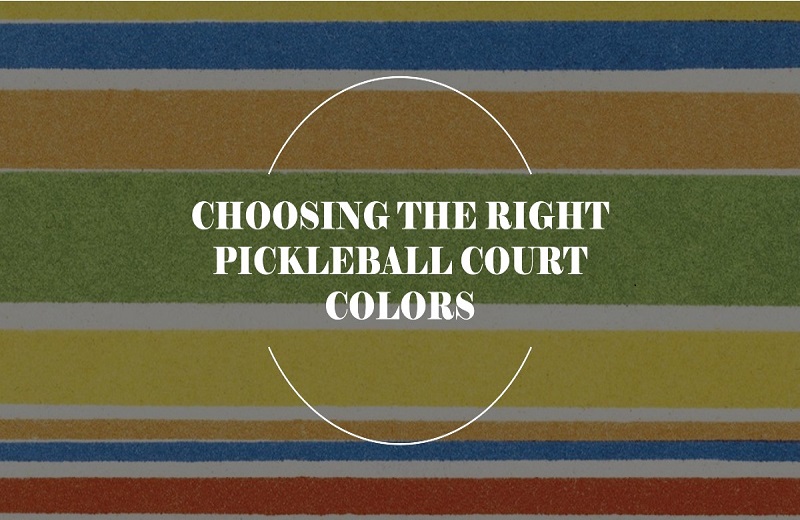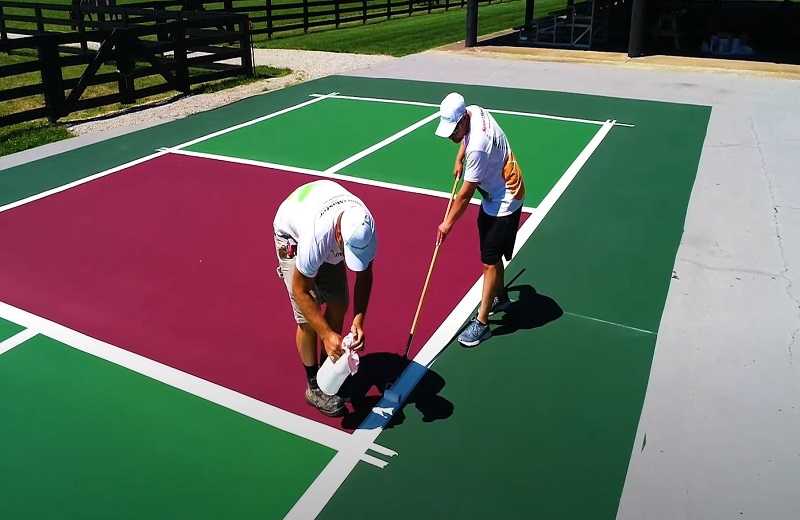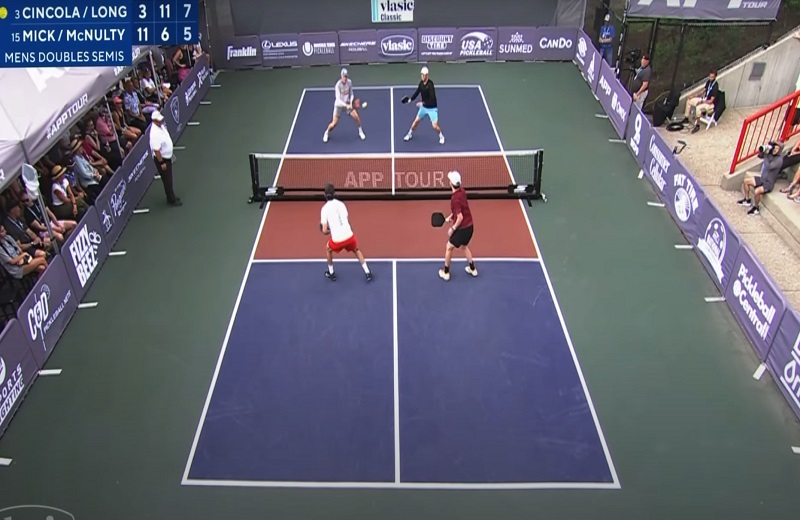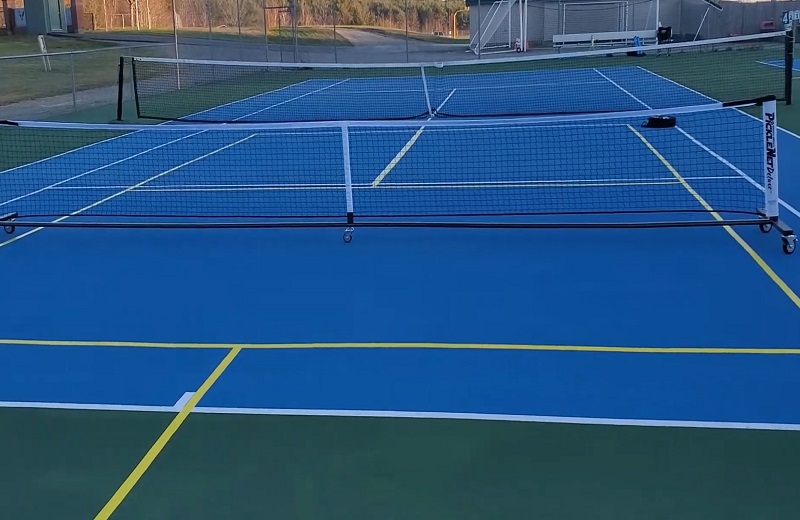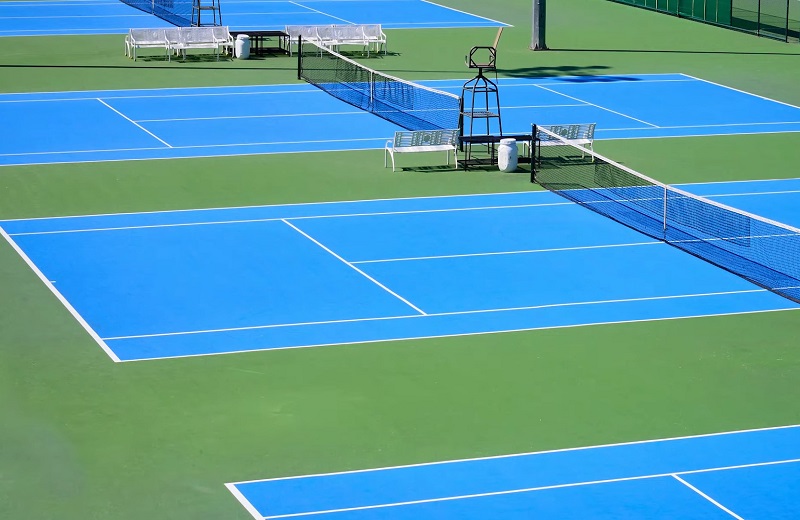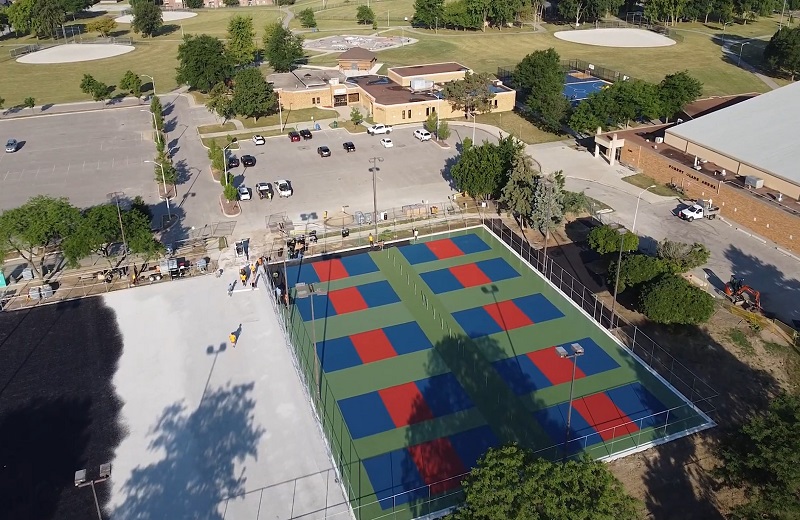Key Takeaways:
- Color choice affects heat absorption and ball visibility.
- Aesthetic appeal is important, but functionality is paramount.
- Standard colors enhance visibility and longevity.
Pickleball Court Colors: A Colorful Array to Spice Up the Game
Pickleball, a sport that has captured the hearts of many, offers a unique canvas for creativity through its court colors. The hues chosen for these pickleball courts are not just for aesthetics, but they also play a crucial role in the pickleball game’s dynamics.
Classic Color Combinations
Traditionally, pickleball courts have been painted in shades of blue and green. These courts’ color combinations are not only pleasing to the eye but also provide a good contrast for the yellow or lime-green pickleball balls commonly used in sports. The International Federation of Pickleball (IFP) recognizes these colors as standard, with the playing surface usually painted green, the non-volley zone in blue, and the service pickleball courts divided by a red centerline.
Unconventional Color Ideas
While blue and green are the most common courts, pickleball courts are not limited to these colors. Some pickleball courts are painted in custom colors to match the branding of a team or club. For instance, black, purple, and yellow are popular custom colors that give the pickleball court a distinct look.
The Role of Line Colors
The color of the pickleball court lines is another important aspect to consider. The USAPA recommends white for boundary lines, as it provides high contrast against the pickleball court surface, making it easier for pickleball players to see. However, the color of the lines can be any color as long as it conforms to the pickleball court lines and the ball.
Color Options: Blue, Green, Red, Purple, Brown, Gray
Each color has its own pros and cons. Light colors like gray are popular in hotter climates as they reflect more light and can be up to 40 degrees cooler than courts with a dark shade. On the other hand, darker colors like navy blue can reduce glare in bright and sunny areas. The key is to choose a color that not only matches your aesthetic mind preference but also enhances the gameplay experience.
Picking the Perfect Colors for Your Court
Pickleball courts, like a chameleon, can adapt their hues to their surroundings without maintenance. The selection of pickleball court color, far from being a mere aesthetic choice, plays a crucial role in the game. Pickleball court color affects visibility, player experience, and even the temperature of the court surface.
The Influence of Location
Location plays a pivotal role in court color selection. A pickleball court nestled in a lush green park area may opt for contrasting colors, while a pickleball court in an urban setting might choose hues that blend with the cityscape. For example, pickleball courts in the Midwest often mirror the earthy tones of their surroundings.
The Purpose of the Court
The court’s purpose can guide court color selection. A pickleball court for casual play might sport a vibrant color scheme, while a professional pickleball court might stick to traditional colors for better visibility and conformity to standards.
Budget Considerations
Cost can influence color choices. While navy blue might be the dream, a lighter shade of blue could be just as effective and more budget-friendly without maintenance.
The Impact of Sun and Lighting Conditions
Sun and lighting conditions can be the factors of color visibility and selection. Light colors, such as a soft shade of blue, reflect more light and are popular in hotter climates. In contrast, darker colors absorb heat, making them less ideal for sunny locations.
What Color Does in Court Design
In the realm of pickleball court design, color selection holds a pivotal role. It’s not merely about aesthetics, but also about functionality. The choice of color can influence visibility, heat absorption, and even the longevity of the pickleball court. Let’s delve into these aspects.
Heat Absorption and Color
The color of your pickleball court can significantly impact how much heat it absorbs and when the maintenance will be. Lighter colors, such as light gray, can reflect more light, making the court cooler. This feature is particularly beneficial in hotter climates. On the other hand, darker shades like navy blue may absorb more heat, potentially making the pickleball court hotter.
Ball Visibility and Color
The visibility of the ball against the court surface is crucial for a good game. Colors that contrast with the ball color can enhance visibility. For instance, a lime-green or yellow ball stands out against a blue or green court. However, the same ball might blend into a court of a similar color, making it harder for players to track the ball.
The Aesthetic Appeal of Color
Color can significantly enhance the overall look and feel of the pickleball court. It can complement the surroundings or even match your favorite sports team’s colors. Some people opt for custom colors like black, purple, or yellow to make their pickleball court stand out. However, avoid overly bright or neon colors as they can be distracting and hinder focus.
Longevity and Visibility
Certain colors can ensure long-lasting visibility on the court without maintenance. Standard colors recognized by the International Federation of Pickleball (IFP) include green for the playing surface, blues for the non-volley zone, and reds for the service courts. These colors provide high contrast between different zones of the pickleball court, enhancing visibility and clarity during play.
FAQs
What type of paint is suitable for a pickleball court?
What’s the correct method to level a pickleball court?
What are the dimensions required for a pickleball court?
Conclusion
In conclusion, the color of your pickleball court significantly influences gameplay, aesthetics, and longevity. It’s not just about picking your favorite color, but about making strategic choices that enhance visibility, manage heat absorption, and ensure long-lasting playability.
Related Article:

